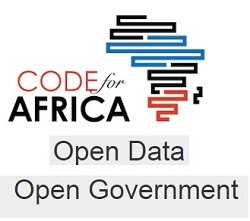Barriers in working with Open Data and Ways to cope with them
05/05/2017


In March, 2017, the European Data Portal released Analytical Report 5: Barriers in working with Open Data. The majority of the EU28+ countries have successfully developed a basic approach to address Open Data, but are at the same time struggling with a number of barriers (related and dependent on each other), hindering them to move forward with Open Data...
__________________________________________________________________________________________________
... At the same time, recent research suggests that such barriers also exist at companies that wish to make use of Open Data, restricting them to fully benefit from the potential of Open Data. At this point, the barriers discovered during the research appear at both the side of data publishers and re-users of Open Data.
|
“Data should be able to flow freely between locations, across borders and within a single data space... If we want our data economy to produce growth and jobs, data needs to be used. But to be used, it also needs to be available and analysed.” – Andrus Ansip, Vice-President for the Digital Single Market |
By the way...
Have European countries developed their Open Data Maturity since 2015?"Open Data Maturity is measured by taking into account Open Data Readiness and Portal Maturity. These indicators cover both the level of development of further national activities promoting Open Data as well as the level of development of national portal features In 2016, on average, with 28.6% increase in comparison to 2015, the EU28+ countries completed 56.6% of their Open Data journey. Countries having an Open Data Policy in place increased from 23 countries in 2015 to 28 countries in 2016…" - Open Data Maturity in Europe 2016 # European Data Portal provides easy access to all the Analytical Reports, Extensive Studies, Videos, User Manuals and other documentation produced by its project team. |
Building on a three-pillar approach, such as:
|
1. An analysis of recent reports on the topic of the publication of Open Data, such as the 2015 and 2016 Open Data Maturity in Europe reports and the European Data Portal (EDP) Sustainability report. These findings were complemented by barriers mentioned when the EDP interacts bilaterally with Member States. 2. To delve into the specific barriers faced by re-users, the results of the EDP Re-using Open Data report were analysed. 3. A broader scoped desk research was conducted. Research also focused on sentiment analysis and interviews conducted with the Open Data community during conference and workshops. |
the Analytical Report 5: Barriers in working with Open Data brings together barriers encountered by both data publishers and re-users of Open Data.
Existing Barries:
1. Portal owners suffering from a lack of technical knowledge on metadata quality on the one hand requires portal owners to invest more time and resources in the publication process, but it can also lead to inappropriate metadata being published, leading to difficulties among re-users to find the data they are looking for.
2. Barriers are found within the political, organisational, legal, technical and financial domain, and awareness on both the availability of Open Data and the specific needs of users of Open Data leaves room for improvement.
3. Specific barriers are found in the geospatial data domain, which uses different standards as compared to other types of Open Data. Working with geospatial data requires thorough and specific technical knowledge, different from the technical knowledge needed to work with ‘usual’ data.
4. Unfortunately, existing solutions are not always shared across Europe, and solutions are sometimes ad-hoc, stand-alone, or only temporary.
Ways to cope with these barriers:
1. More and more portal owners are using the DCAT-AP profile, resulting in more standardisation and a better accessibility of data.
2. Portal owners are organising events to drive user communities, national guidelines for the publication of data are put in place and users have developed work-arounds to use particular datasets.
3. An important means to get insights in each other’s needs and to find sustainable solutions to address barriers is to open up the dialogue between data publishers and re-users.
Still, it is important to realise that there is no single solution that will solve all the challenges. Instead, policies need to address a combination of interwoven solutions to the different types of interdependent challenges.
Access for free Report 5: Barriers in working with Open Data
to gain more insight into the barriers faced by Open Data suppliers and users, as well as best practices to overcome these barriers.
__________________________________________________________________________________________________
Related content:
- Look which countries are ahead in OPENING NATIONAL LAWS (Global Open Data Index, 2017)
- Commission outlines next steps towards a European data economy (European Commission - Press release, 10 January 2017)
- Unlocking the Potential of Open Data through Community Engagement (Data Smart City Solutions)
- OpenChannels: Forum for Ocean Planning and Management : with Openness in-mind (AIMS)
- Gates Open Research: accelerating access to research products (AIMS)
- Unpaywall : find open access versions of paywalled articles ! (AIMS)
- Re-using Open Data ...: a new European Data Portal study report (AIMS)
- openAFRICA : the largest independent repository of open data on the African continent (AIMS)
- INRA2025 : Open Science priority, Data sharing and much more (AIMS)
- LICENTIA: a web site to Choose the License for your Data (AIMS)
- Presentations from Open Science and Open Data in Agriculture Forums and workshops published on OKAD (AIMS)
- Open Science Monitor : access to data and trends on open science (AIMS)
- Legal issues on Open Research Data : How Open and FAIR is your dataset? (AIMS)
- Big and Open data Position Paper (Networked & Electronic Media)
- Understanding Barriers to Open Government Data (Open Knowledge International)
